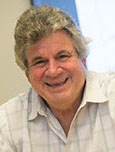Fall 2017 Joint CSC@USC/CommNetS-MHI Seminar Series
 |
Allen Tannenbaum,
Stony Brook University
|
Abstract
Today's technological world is increasingly dependent upon the reliability, robustness, quality of service and timeliness of networks including those of power distribution, financial, transportation, communication, biological, and social. For the time-critical functionality in transferring resources and information, a key requirement is the ability to adapt and reconfigure in response to structural and dynamic changes, while avoiding disruption of service and catastrophic failures. We will outline some of the major problems for the development of the necessary theory and tools that will permit the understanding of network dynamics in a multiscale manner.
Many interesting networks consist of a finite but very large number of nodes or agents that interact with each other. The main challenge when dealing with such networks is to understand and regulate the collective behavior. Our goal is to develop mathematical models and optimization tools for treating the Big Data nature of large scale networks while providing the means to understand and regulate the collective behavior and the dynamical interactions (short and long-range) across such networks.
The key mathematical technique will be based upon the use optimal mass transport theory and resulting notions of curvature applied to weighted graphs in order to characterize network robustness. Examples will be given from biology, finance, and transportation.
Biosketch
Allen Tannenbaum is an applied mathematician and presently Distinguished Professor of Computer Science and Applied Mathematics & Statistics at the State University of New York at Stony Brook. He is also Investigator of Medical Physics at Memorial Sloan Kettering Cancer Center in New York City.
Prof. Tannenbaum has done research in numerous areas including robust control, computer vision, and biomedical imaging, having more than 500 publications. He pioneered the field of robust control with the solution of the gain margin and phase margin problems using techniques from Nevanlinna–Pick interpolation theory, which was the first H-infinity type control problem solved. He was one of the first to introduce partial differential equations in computer vision and biomedical imaging co-inventing an affine-invariant heat equation for image enhancement. Tannenbaum and collaborators further formulated a new approach to optimal mass transport (Monge-Kantorovich) theory. In recent work, he has developed techniques using graph curvature ideas for analyzing the robustness of complex networks.
His work has won several awards including IEEE Fellow, O. Hugo Schuck Award of the American Automatic Control Council in 2007 (shared with S. Dambreville and Y. Rathi), and the George Taylor Award for Distinguished Research from the University of Minnesota in 1997. He has given numerous plenary talks at major conferences including the IEEE Conference on Decision and Control of the IEEE Control Systems Society in 2000, the International Symposium on the Mathematical Theory of Networks and Systems (MTNS) in 2012, and the SIAM Conference in 2017.
